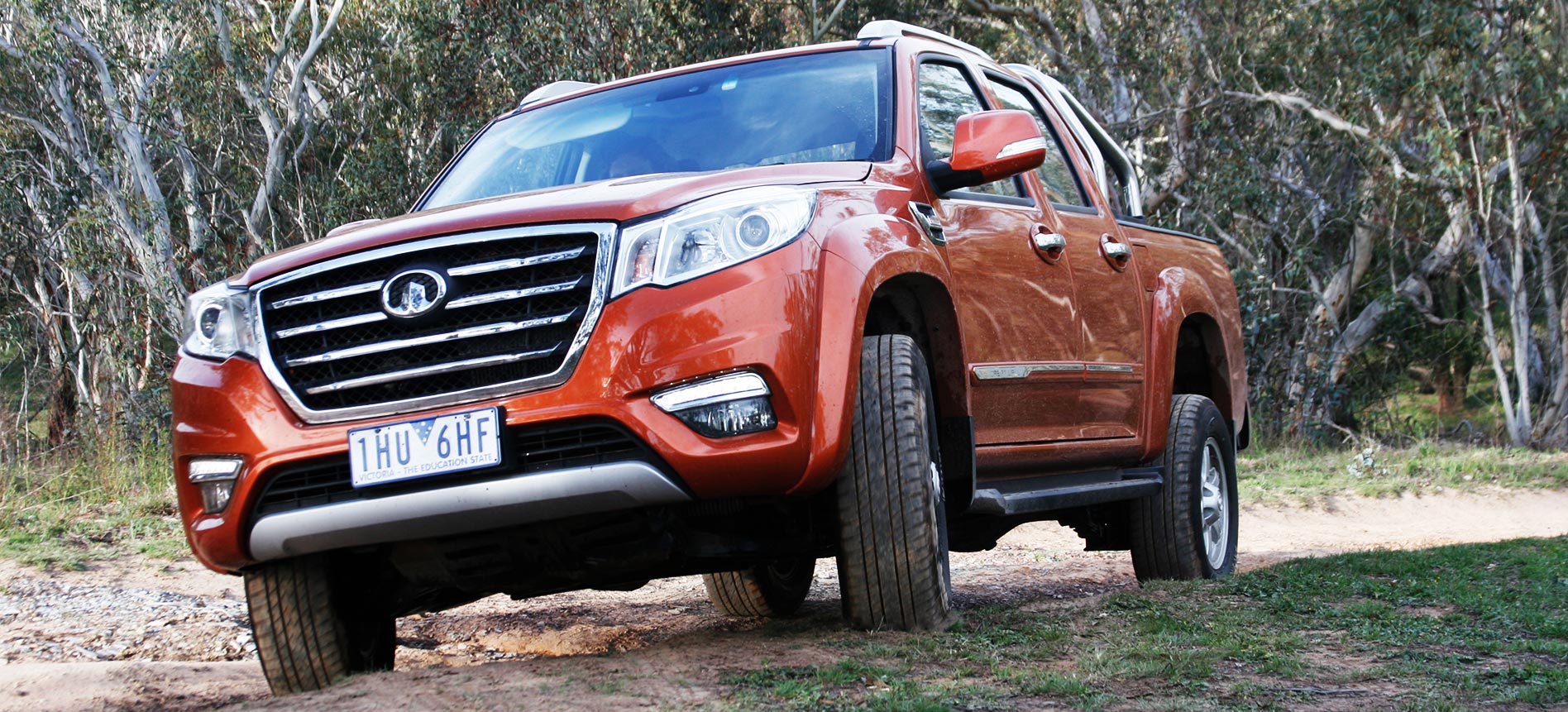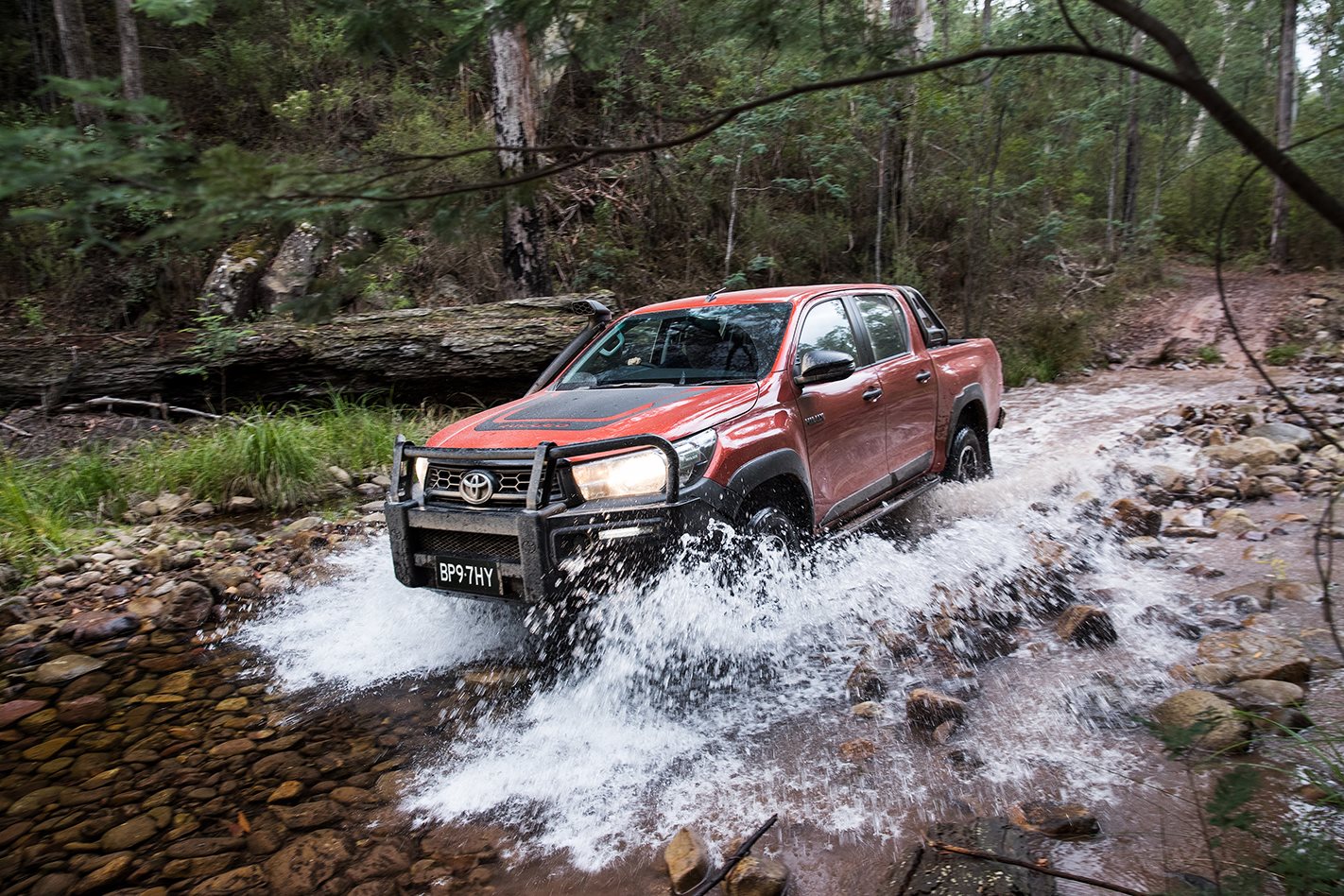There’s more to picking a 4×4 ute than price and power. We weigh up what’s around
THE POINTY END
Ford Ranger
Steady development has really paid dividends for the Blue Oval’s best seller. The range-topping Raptor has a chassis touched by brilliance, but this Baja-buster is heavy, pricey, and probably over-engineered for what you want to do with it. If you’re not willing to fork out close to $80K on-road, there’s ample appeal elsewhere in the range. The interior is typical unsexy Ford, but scores well for functionality. And don’t turn your nose up at the twin-turbo 2.0-litre diesel, available in XLT and Wildtrack (as well as Raptor). It’s actually punchier than the old 3.2-litre five throughout the rest of the range, as well as more frugal, lighter over the nose, and it pairs with the 10-speed auto.
Pick of the range: Short of the Raptor, a 2.0 XLT at $60,340 would be our target.
Verdict: A top seller in the private sector for good reason.
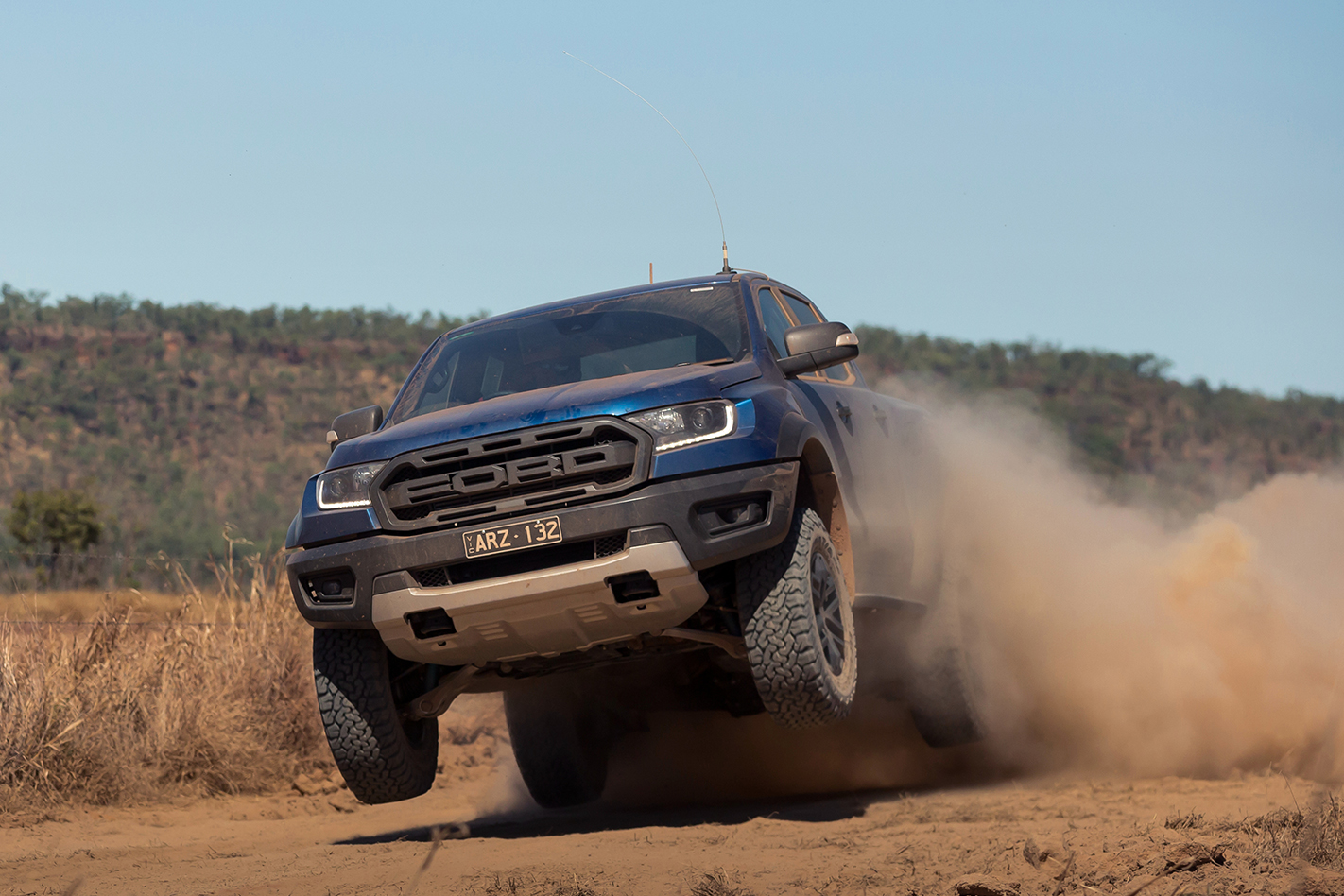
Volkswagen Amarok
The ageing Amarok has been left behind in terms of plenty of safety and convenience equipment – it lacks push-button start, radar cruise control, rear cross-traffic alert, blindspot monitoring and AEB – but still mounts a case for itself based purely on smoothness, quietness, and bump-absorption abilities. Its 3.0-litre V6 leads the class (along with the top-spec Merc X-Class) for punch, refinement and real-world frugality relative to performance. Long-wheelbase XL and XXL versions are being made available for buyers who prioritise tray space. Plus there’s the on-road security of constant all-wheel drive, a beaut eight-speed auto, and accommodating (if austere) interior. All of which keeps the VW up the pointy end of a segment bereft of brilliance.
Pick of the range: Availability of the V6 starts with the TDi 500 Core at $49,590; worth it.
Verdict: Getting old, but shouldn’t be forgotten.
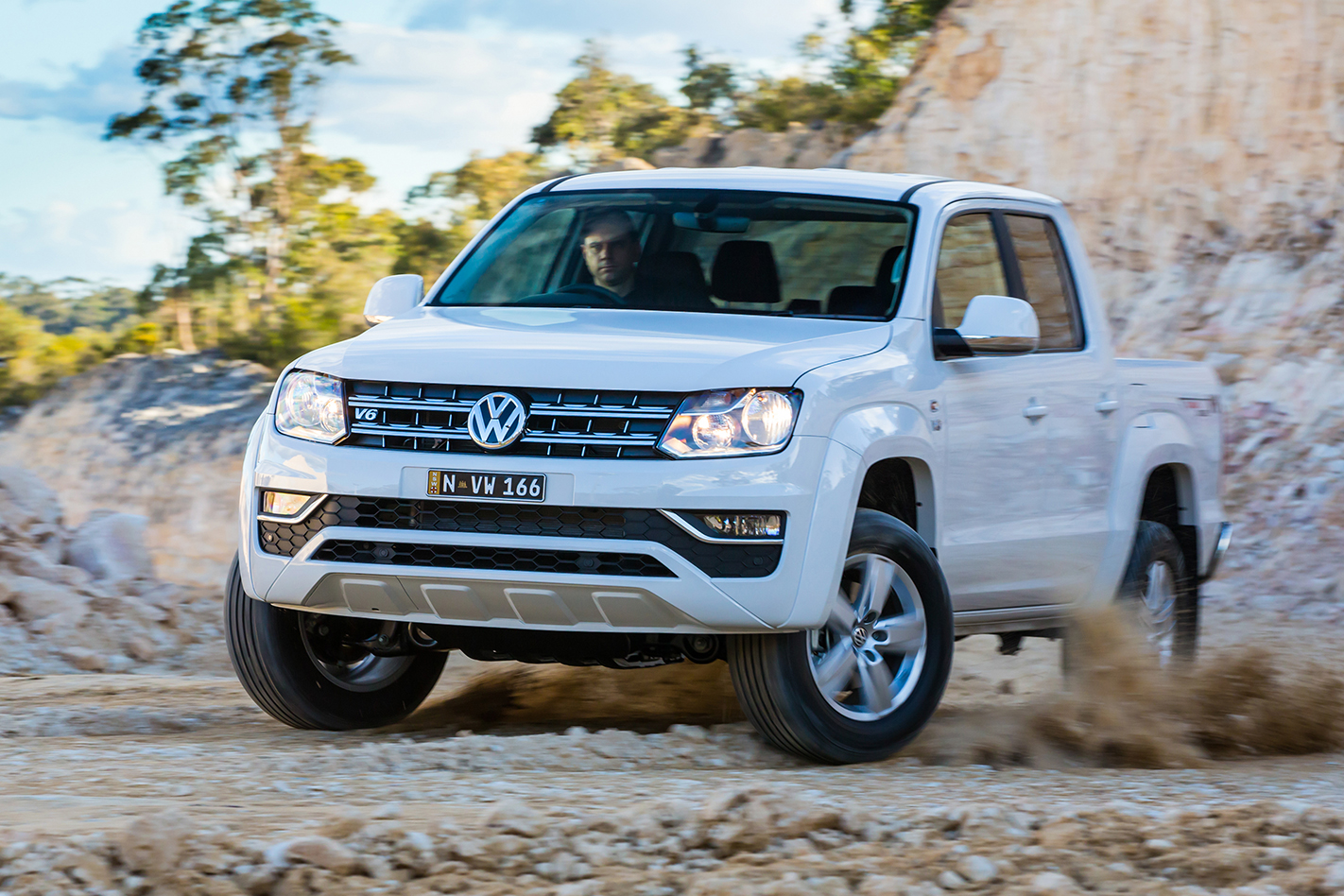
Toyota Hilux
Sheer weight of sales success may suggest that Hilux is right up at the pointy end for desirable attributes in this segment, but don’t swallow the hype. Fact is, the Hilux is very much a midfielder in key areas like engine performance and refinement, dynamic poise and ride comfort. And despite being one of the more youthful utes here (it arrived mid-2015) it lacks Apple CarPlay/Android auto, dual-zone climate control, and a digital speedo. Better is the inclusion now of AEB, radar-cruise and speed-sign recognition, and it makes a persuasive case in the broader ownership sphere, where reliability, aftersales service and retained value accounts for plenty.
Pick of the range: The value starts to trail off as you summit the range with Rugged X and Rogue; we’d stick with an auto SR5 ($56,440) or auto Rugged for only a few hundred more.
Verdict: Ubiquitous, unremarkable, but worthy.
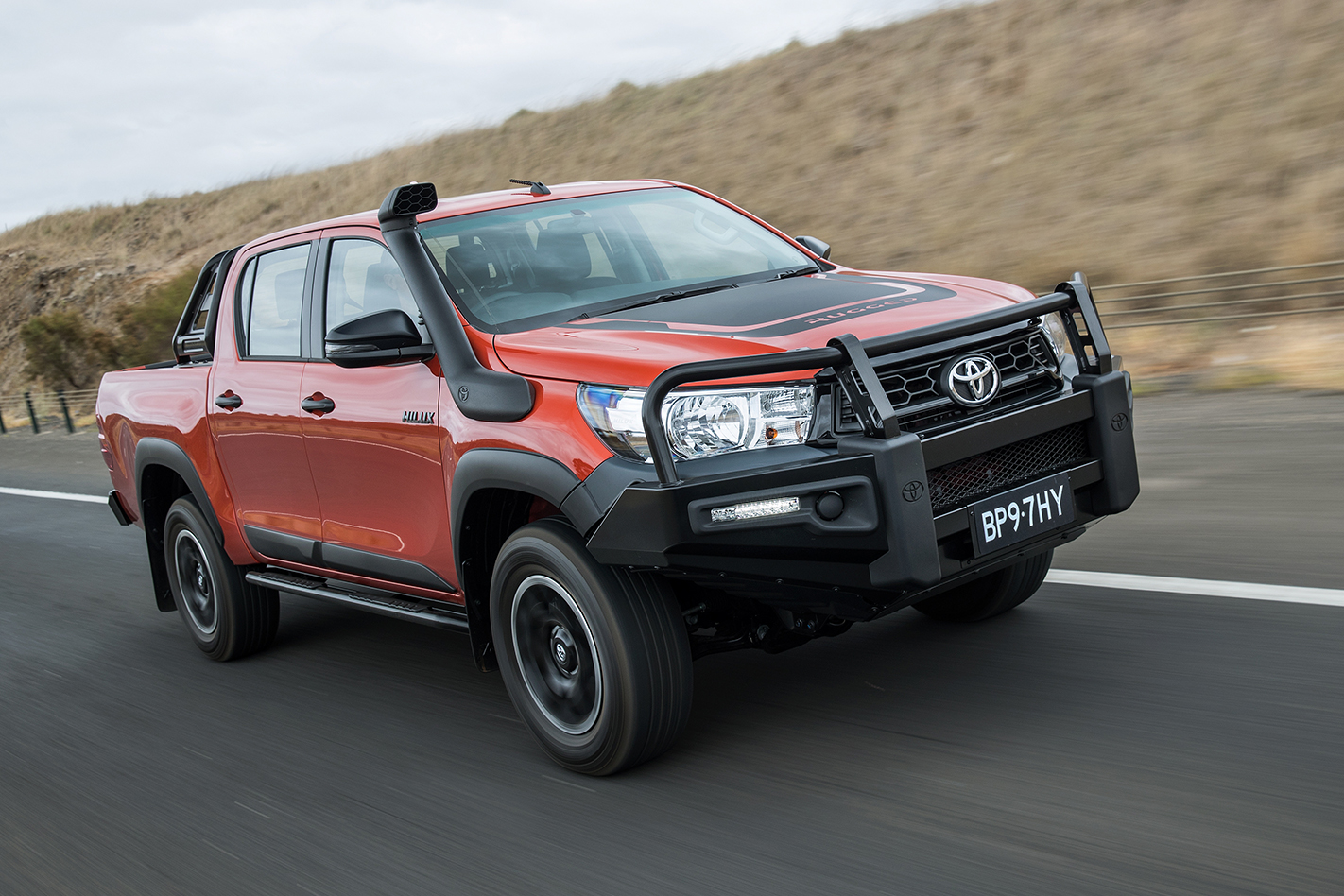
THE MIDFIELDERS
Mercedes Benz X-Class
The axing of Merc’s premium pick-up is proof there’s no such thing as a sure bet when it comes to selling cars here. But could Merc’s loser be your gain? The interior is a real cut above the 4×4 norm, and the driving experience benefits from the additional NVH measures the German engineers foisted on the Nissan Navara platform. The 2.3-litre four-cylinder is acceptable rather than exceptional in terms of performance and economy, but the 3.0-litre V6 is properly punchy and refined. Biggest drawback to the latter was the $73K entry point; the top-spec Power lists for $79K plus on-roads. You can now land a Power for under $70K driveaway, which some may argue is what it should have been all along.
Pick of the range: Shoot for the top and drive a hard bargain on an X350d in either spec level.
Verdict: Benz badge, now for Amarok money
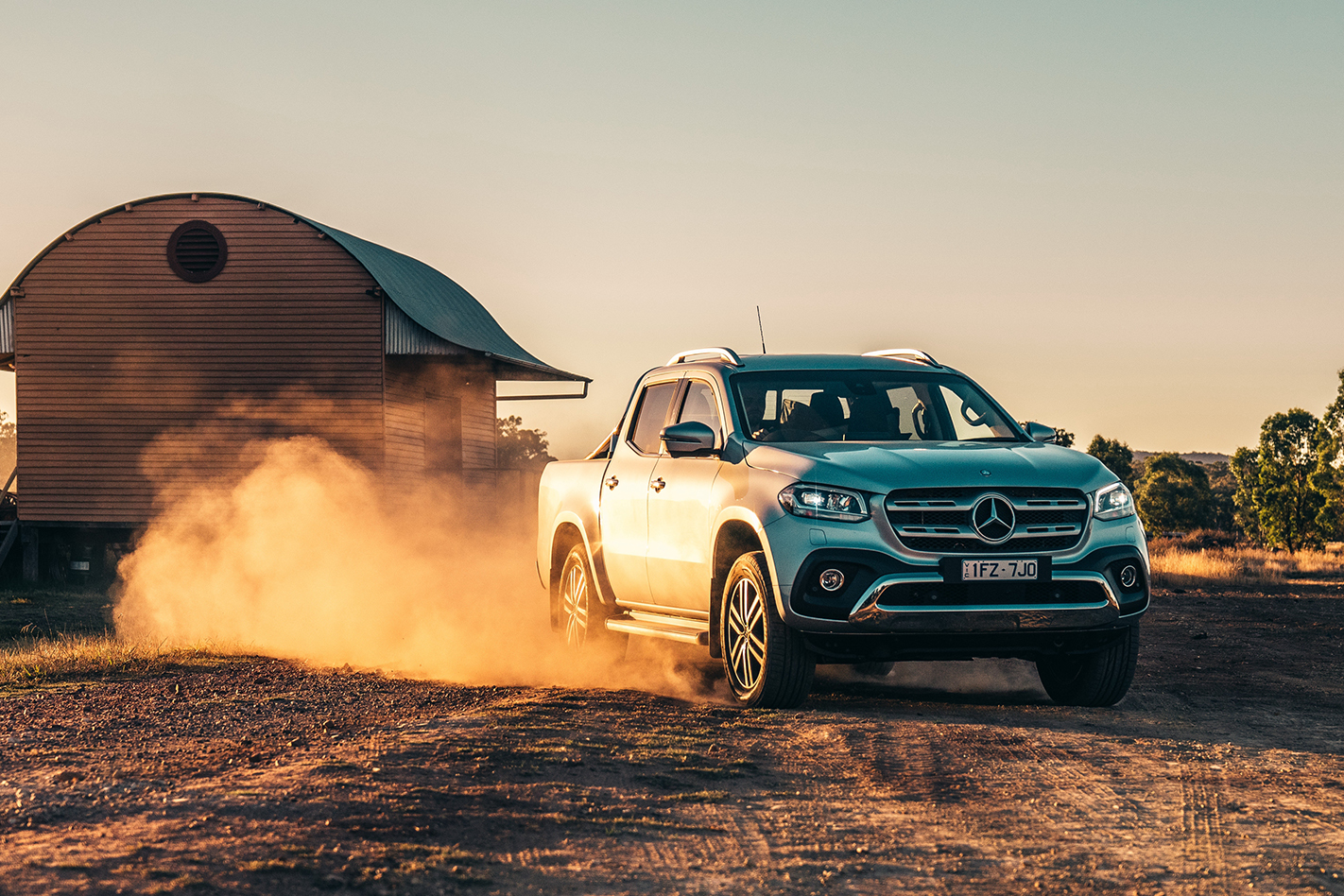
Mitsubishi Triton
This one’s cheap for a reason. Driven back-to-back with something like a Ranger or even an Amarok it feels a generation behind. But the safety upgrade (blindspot monitoring, rear cross-traffic alert and AEB) that came with the front-end restyling is a welcome inclusion, and the 2.4-litre diesel has better refinement than other midfielders like Navara and D-Max. Retuning the rear suspension has netted benefits, but if you’re a regular hauler of heavy loads, be aware the tub on dual-cab Tritons overhangs the rear axle more so than other utes, meaning a chunk of the extra weight is placed behind the axle. Does the steering no favours…
Pick of the range: The $41,040 GLX ADAS auto packs a value punch.
Verdict: If the budget’s tight, it’ll get the job done without you wanting to set it on fire.

Mazda BT-50
Ah, the mystery of the Ranger’s unloved brother. Given Mazda Australia’s overall slice of the local market compared to that of Ford, the BT-50, which was co-developed with the Ranger, should not be so roundly ignored. So why is it? Could it be the slightly feline front-end styling doesn’t connect with the blokey target market? It doesn’t help that the BT-50 has missed out on much of the Ranger’s ongoing development, including the move to electric power steering assistance and additional safety systems. The once punchy five-pot is now slower than plenty of the smaller-capacity fours in this class, and equipment you may think is a given in 2020 – digital speedo, push-button start, and radar cruise control, for example – is missing. Suddenly the unloved bit is easier to understand.
Pick of the range: An auto XTR, if it’s so cheap you can’t refuse.
Verdict: Been left to wither, so showing its age.
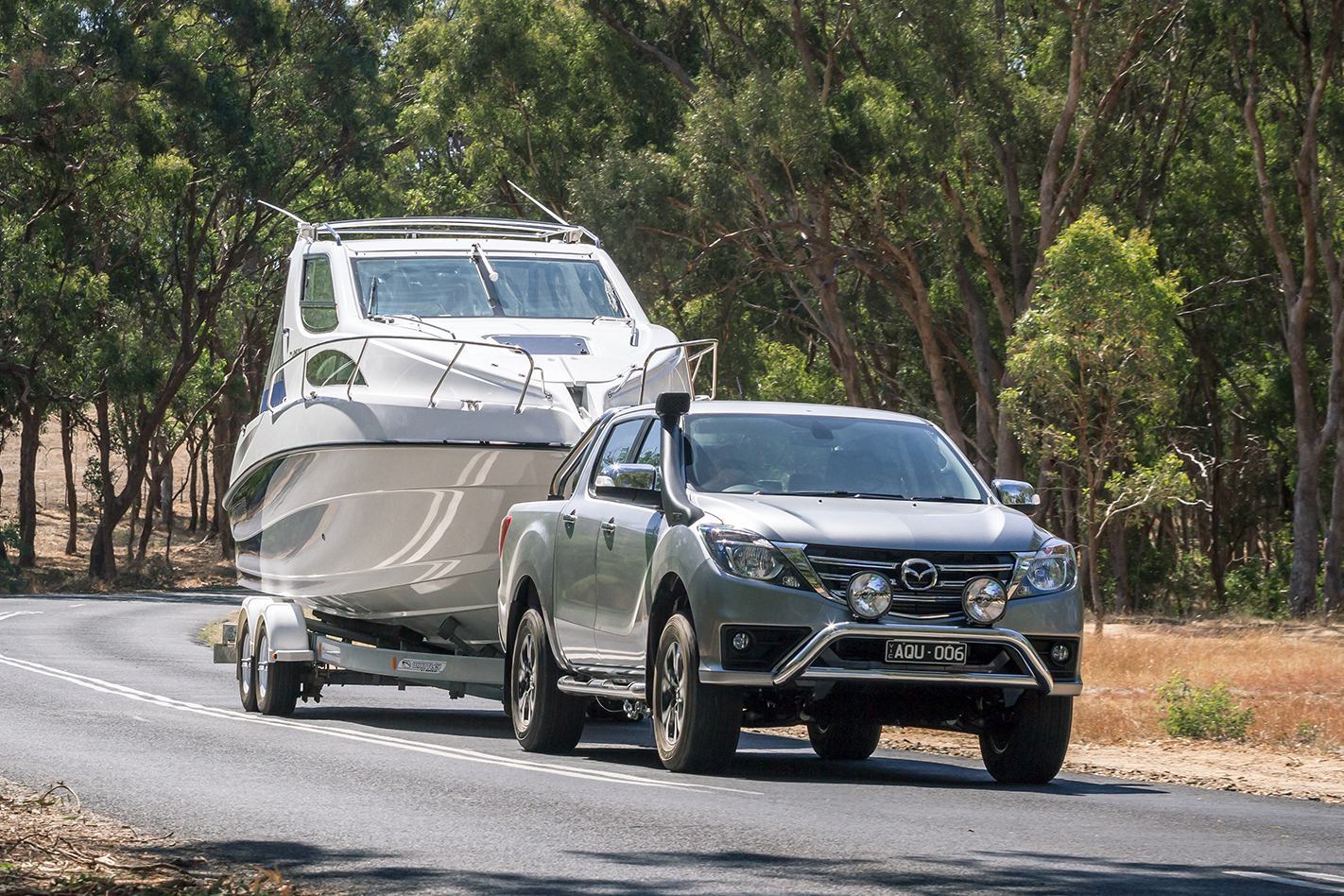
Nissan Navara
You can’t accuse Nissan of not persevering to get its stalwart ute’s rear suspension right. It feels like this D23 generation has had more tweaks to the coil-sprung rear end than Scott Morrison had days on the beach in Hawaii, but it’s still no benchmark for ride, composure, nor load-carrying ability. Better news is found under the bonnet, where the twin-turbo diesel four teams with the seven-speed auto to deliver responsive performance, middling fuel consumption and not horrid refinement. The cabin’s quite nicely presented, too, with a logical layout and car-like ambience. But the seats are flat and shapeless, and the safety story is not compelling. You can do better.
Pick of the range: Driveaway deals to be had on the ST-X.
Verdict: Carlos Ghosn never bothered trying to pinch one from the warehouse.
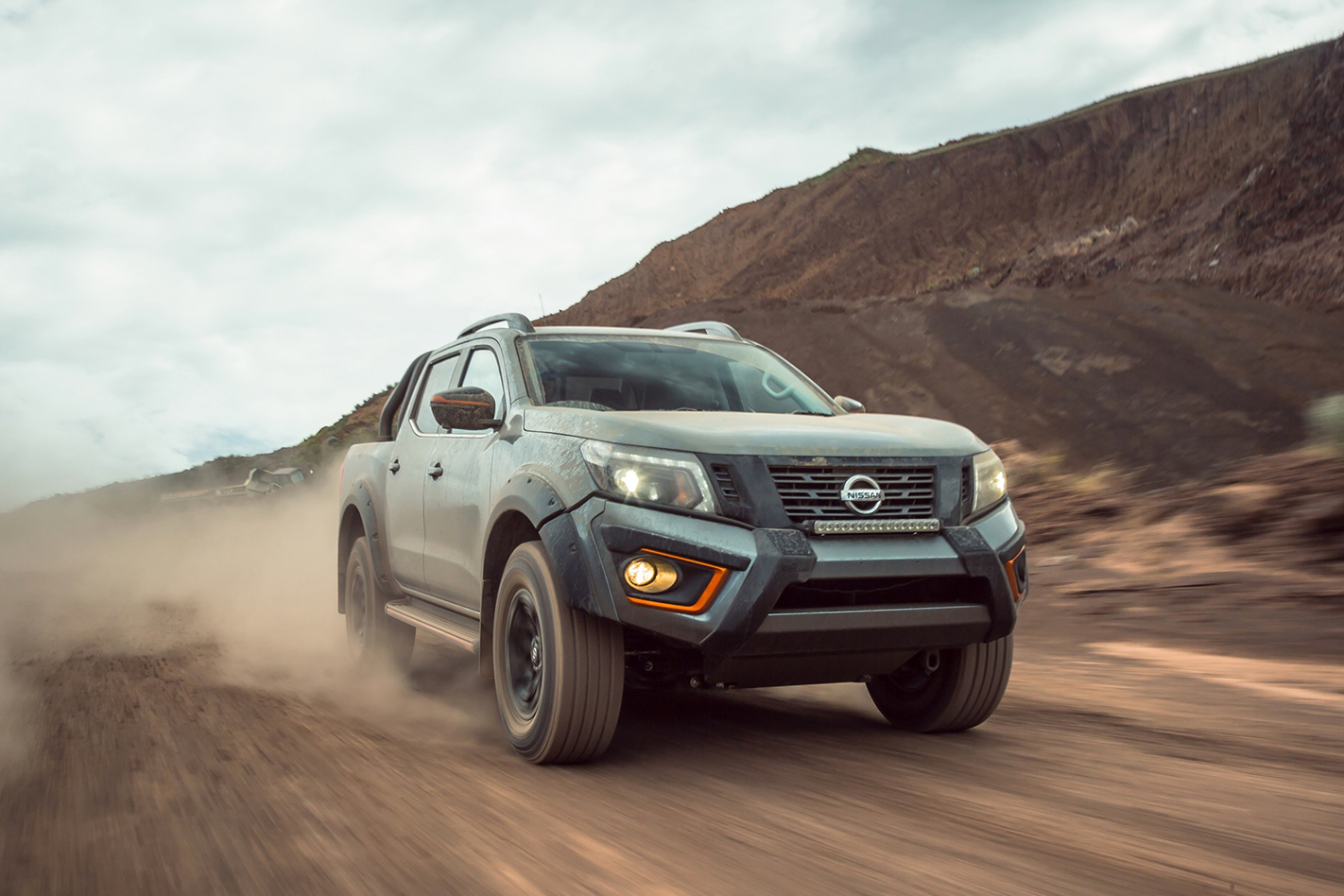
Holden Colorado
Holden’s ute, which has often been the fifth-best seller in this segment, is now a Dead Man Walking thanks to the brand being extinguished at the end of 2020. So why would you buy one? Fact is, Colorado does have virtues – the 2.8-litre engine pulls hard from low revs, and the local development of its chassis is evident in the well-tuned steering and sure-footed handling. Interior presentation is decent if you can ignore the cheap plastics, and there’s a robust functionality pretty much everywhere you look. But it lacks the overall polish of the likes of Ranger, and misses out on key safety features like AEB. Deal breaker? Possibly not, when there are dealers falling over themselves to clear stock at bargain prices.
Pick of the range: An LTZ auto is the sweet spot, but shoot higher if the price is right.
Verdict: Haggle like it’s a tuk-tuk ride in Bangkok, then wait for the kids next door to go, “Hey Mister, what’s a Holden?”

SUPERSIZE ME!
Ram 1500
It seems a little incongruous, but despite its hulking size and weight, the Ram 1500 is the closest thing Aussies can buy to the Commodore and Falcon V8 utes of yesteryear. Great-sounding Hemi V8 delivers 0-100km/h in around 7.0sec, way quicker than a Raptor, although expect it to slurp at least 16L/100km around town. Extra rear-seat room and vast cargo tray are the upsides of the oversized dimensions, but your parking-spot options just shrunk. Coil-sprung rear end contributes to thoroughly civilised on-road demeanour, and the local conversion to RHD is executed with care and quality.
Pick of the range: There’s only two, so not a confusing choice.
Verdict: Should make no sense; somehow does.
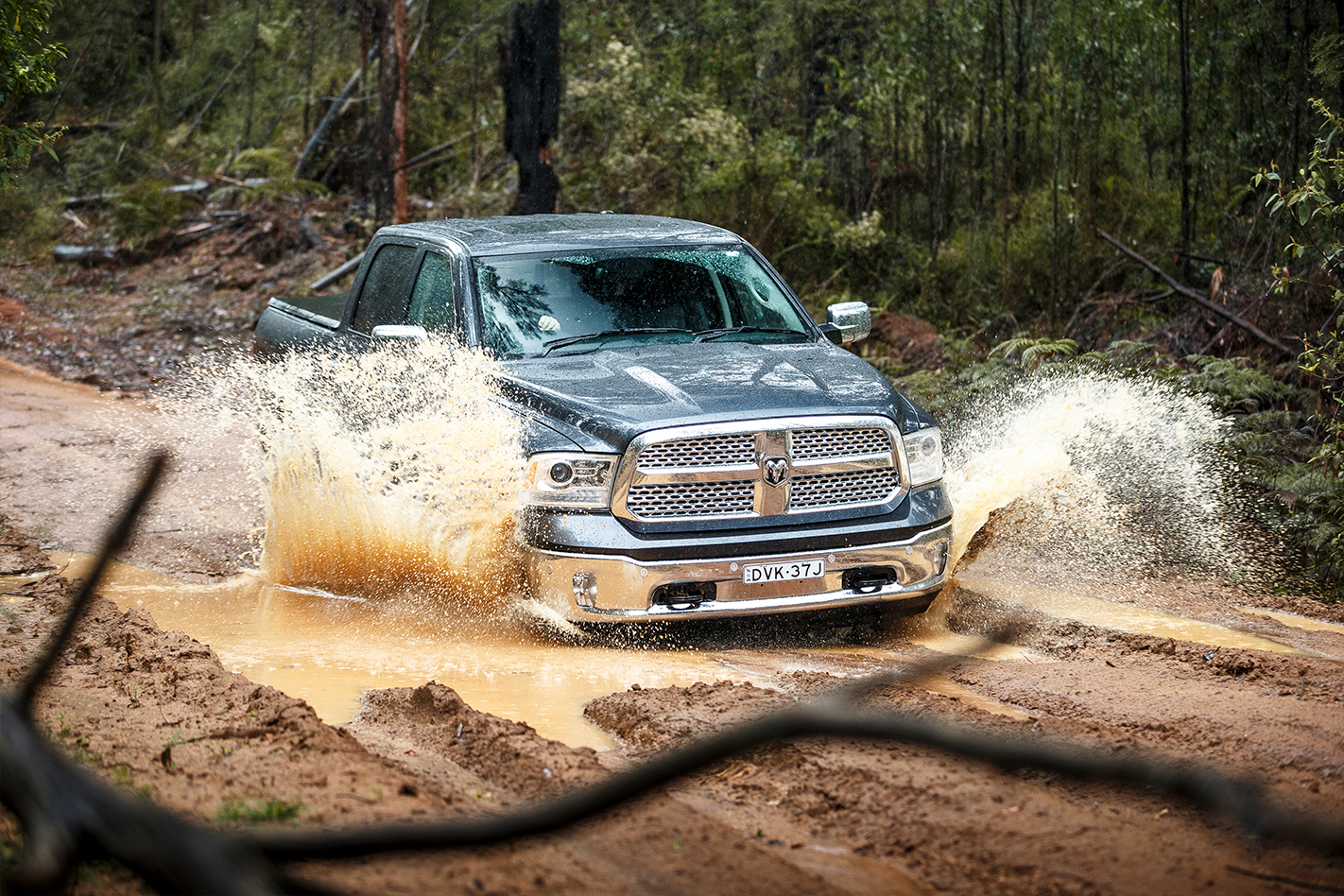
Jeep Gladiator
If you have a penchant for heading into seriously inhospitable terrain and then getting semi-naked, Jeep’s ute, due here mid-year, could be for you. Okay, the nudity we’re referring to is for the vehicle (although operator clothing is optional), because as with the Wrangler from which it’s developed, Gladiator allows you to lower the windscreen, and even remove the doors with provided tools, for a blissful breeze over your bits.
Its wheelbase is longer than that of the Wrangler, which makes for a more planted, composed ride. Confirmed engine is the 3.6-litre Pentastar petrol V6, which is smooth and refined, but not a torque monster, and likes a drink. It’s mated to a slick-shifting eight-speed auto, and all the hardware needed for extreme off-roading works seamlessly. What isn’t yet confirmed by Jeep’s Australian operation is whether we’ll get a diesel engine option, or a manual transmission. The former could be a deal-breaker for some.
Pick of the range: Rubicon.
Verdict: Built to take you places the others can’t.
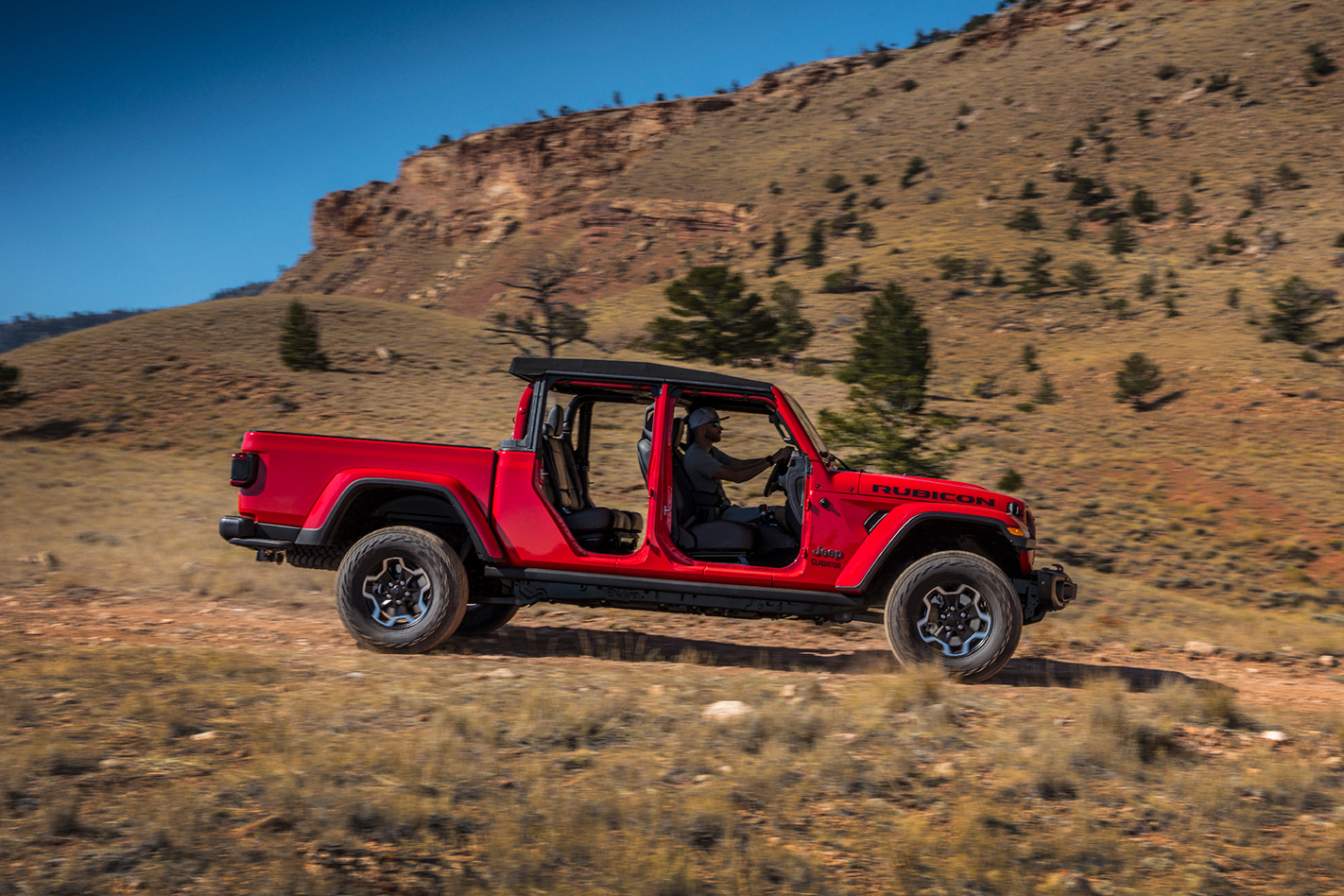
HSV Chevrolet Silverado
It’s hard to know which numbers to focus on first – the dimensions, the price tags, or the torque output. Let’s cover them with ‘huge, huger, monstrous’. There are five spec levels to choose from, spanning $115K to $148K, all powered by a beast of a turbo-diesel: the 6.6-litre Duramax V8 pumping out 332kW and – wait for it – 1234Nm. An Allison six-speed auto handles the shifting; four-wheel discs are tasked with hauling it down. Performance is pretty lively, given the weights range between 3.5 and 3.7 tonnes, but you’d only buy one of these if you need to tow a boat the size of a Sydney ferry, or relocate Clive Palmer to a richer pasture.
Pick of the range: 2500 LTZ Midnight.
Verdict: This ain’t Texas, y’all, so let’s be sensible.
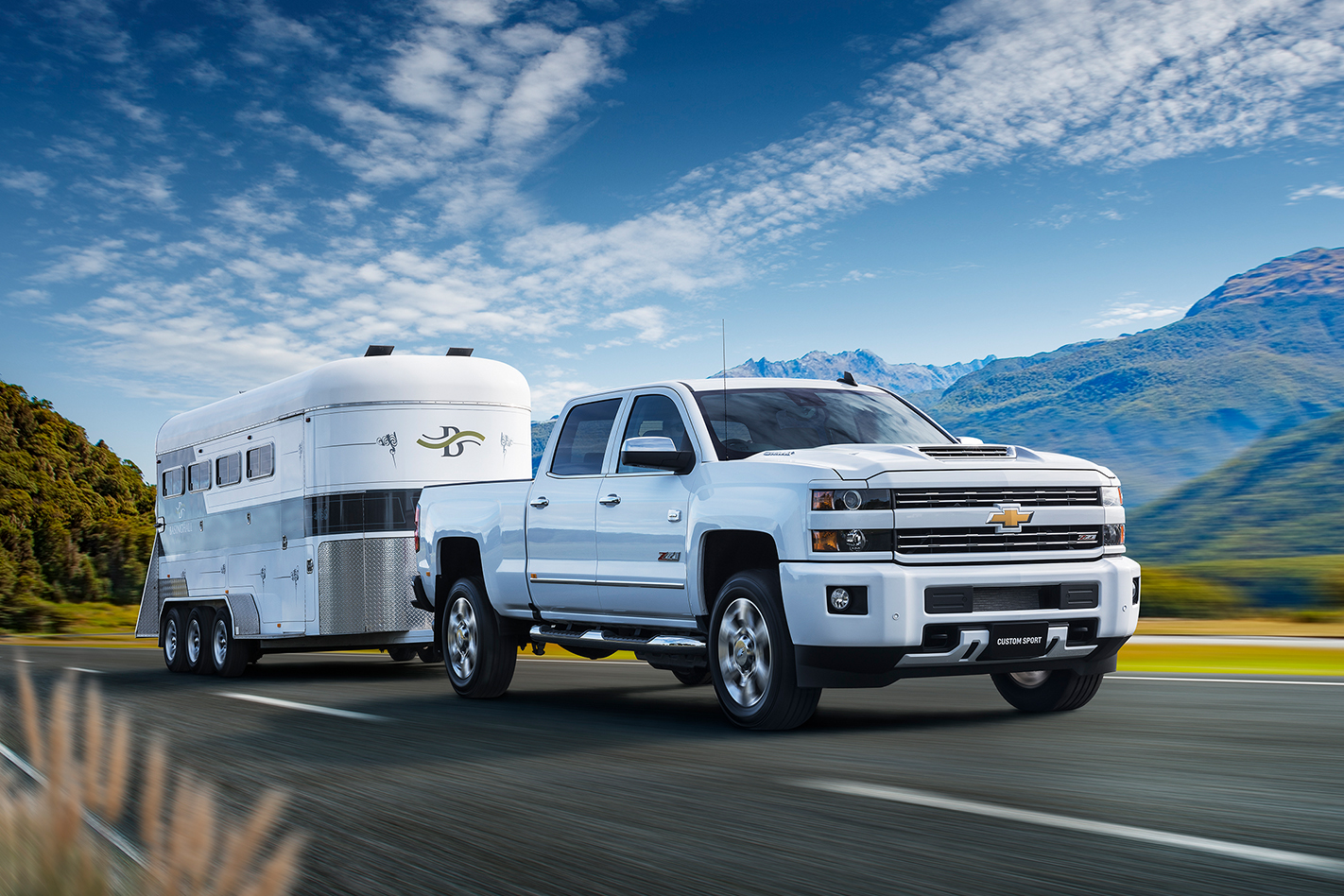
THE REST
SsangYong Musso
This is the real sleeper of the 4×4 ute segment, offered in both standard and long-wheelbase guises, and boasting one of the biggest trays in class, along with best-in-class seven-year warranty. You can choose between coil rear suspension (allowing an 880kg payload) or a leaf-spring rear that can handle 1025kg. Relatively small 2.2-litre four-cylinder turbo-diesel is matched to a six-speed automatic transmission, giving midfielder performance, but is way quieter and more refined than most. Standard safety tech shames a few bigger names, and includes AEB, rear cross-traffic alert and blindspot monitoring. Nice-quality cabin, too. So why wouldn’t you? Lack of an ANCAP crash-test result is an anomaly, as is the lap-belt-only for the second-row’s centre seat. Keen pricing may make you question how much you really love that middle child.
Pick of the range: Ultimate XLV is under $40K.
Verdict: Kia is not the only Korean brand with the power to surprise.

Isuzu D-Max
Isuzu left the D-Max virtually untouched until 2017, when mandatory compliance to tougher Euro 5 emission regs brought a revised engine along with six-speed manual and auto gearboxes (replacing the previous five-speeders.) NVH improvements and equipment upgrades also featured; then, in 2018, all SX, LS-U and LS-T dual-cabs were specced with more-compliant three-leaf rear springs designed to improve the unladen ride. (LS-M models retain the five-leaf springs.) But the big 4JJ1 3.0-litre four with its beefy timing chain is still a bit vocal when asked to work for its keep and the interior presentation certainly puts the emphasis on function rather than form. But, as steady sales suggest, there’s a ready market for something that’s a known quantity and which sports a reputation for simplicity, low service costs and reliability. While others may deliver more shine in the showroom, the D-Max can still deliver when you’re in a tight spot.
The biggest deterrent to buying a D-Max right now, however, is the imminent arrival of an all-new model. Exact timing of the new D-Max is hazy, though it could be as early as this July. The new-gen model is the first full update in eight years and will bring important upgrades to the powertrain and the exterior and interior styling, plus a host of additional safety and convenience features.
Pick of the range: Auto LS-U.
Verdict: Unless dealers can really surprise us on pricing, we’d probably wait for the updated 2020 D-Max
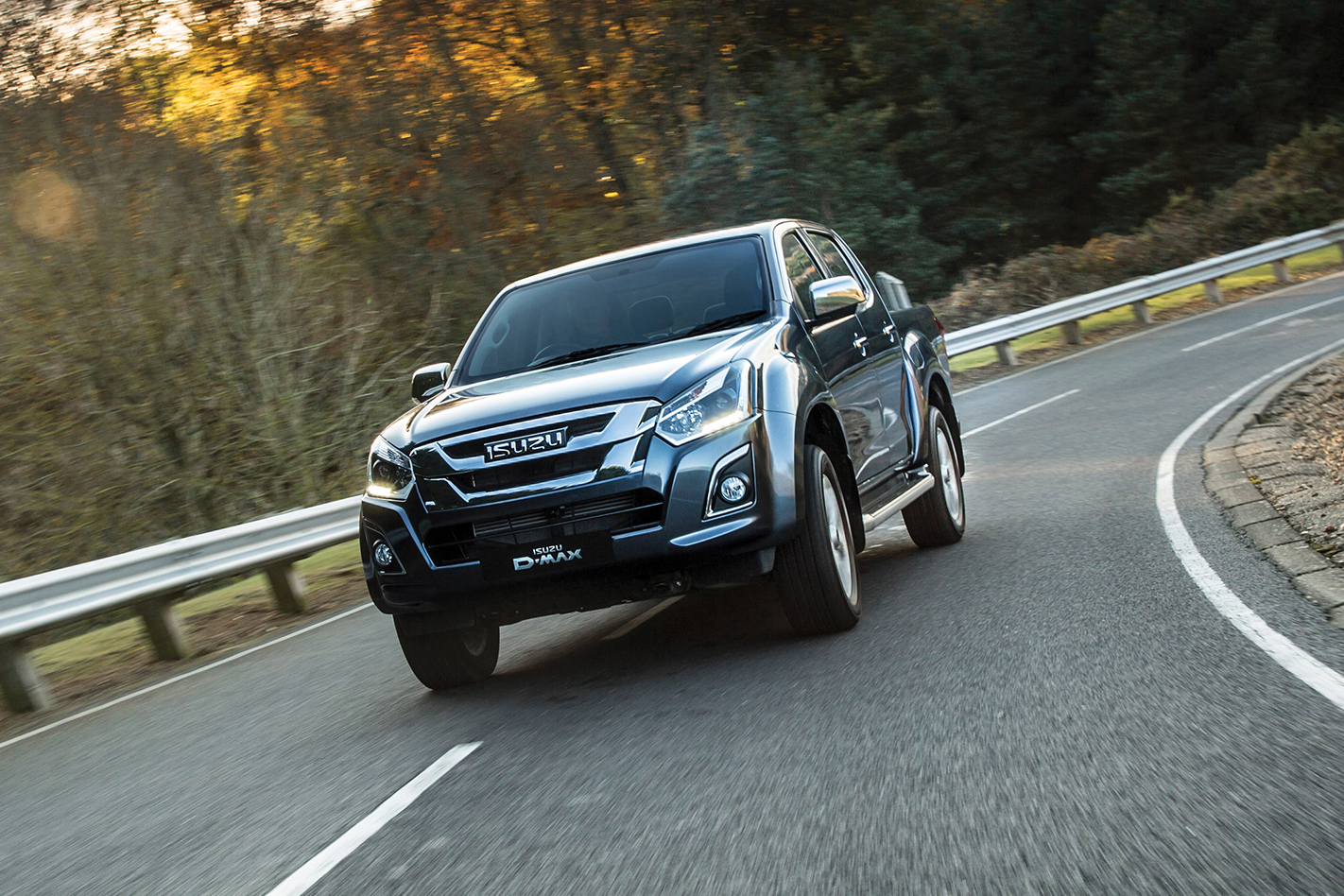
LDV T60
Cheap doesn’t make this Chinese fringe player entirely cheerless. The top-of-the-range LDV T60 Luxe automatic costs from $35,490 drive-away, making it anywhere between $10,000–$15,000 cheaper than similarly equipped rivals here. It scores a five-star safety rating, it’s one of only a couple of utes to feature rear disc brakes, its shock absorbers are specced for Australia, and its 10.0-inch infotainment screen is the biggest in class. Oh, and the MegaTub variant boasts the biggest tray of any 4×4 dual-cab in the class. So what’s the catch? Well, the 2.8-litre four-pot engine is a weakling, making just 110kW and 360Nm, with a useable powerband narrower than the gap between Mr Burns’ eyeballs. But not only is it slow, it idles noisily and resents hills. Then there’s the steering rack rattle and kickback over corrugations. For now, the LDV speaks of potential, rather than your cue to jump in.
Pick of the range: Top-spec auto T60 Luxe cheap enough to not bother looking below.
Verdict: New engines coming, so cool your jets.
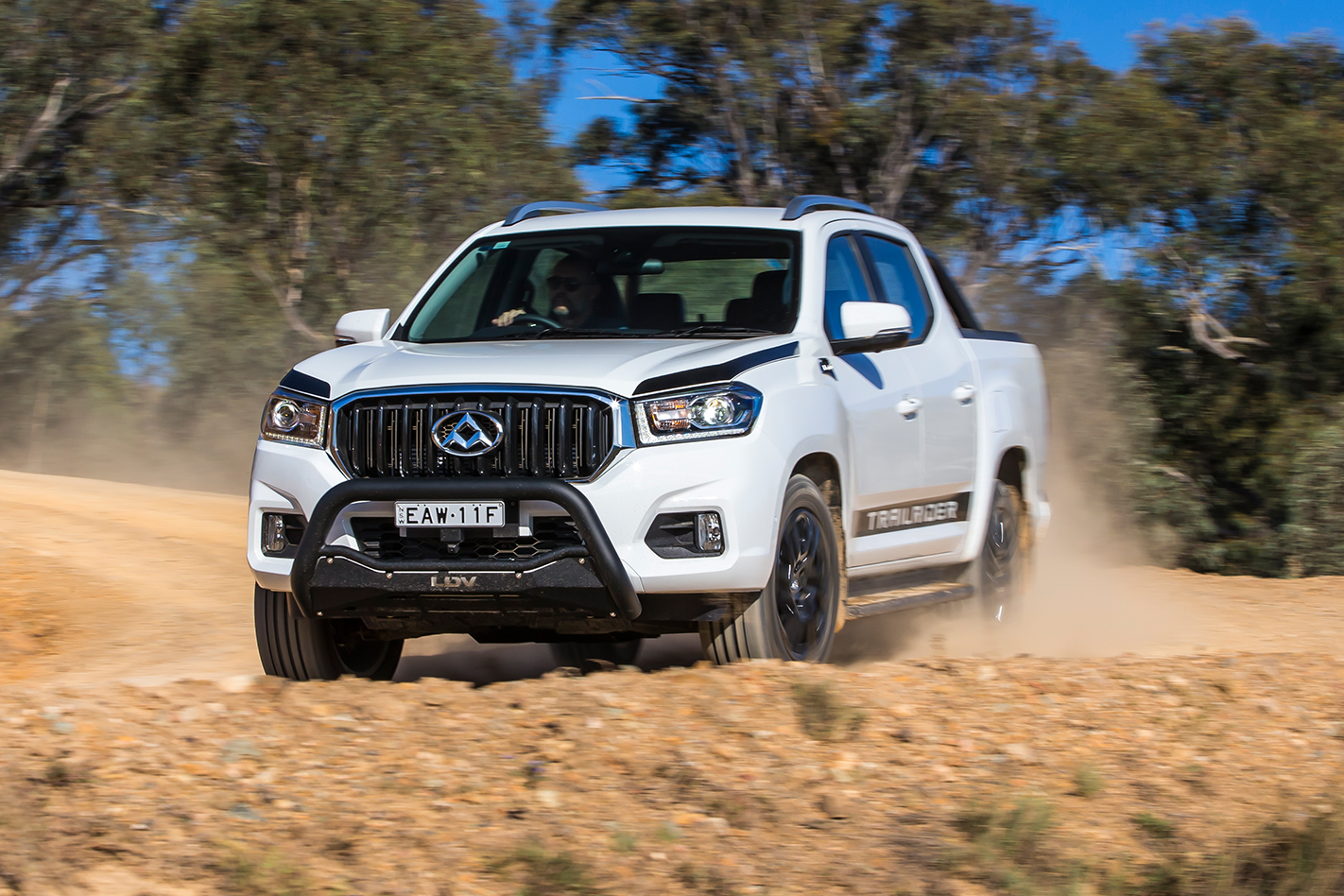
Mahindra Pik-Up
Aussies love to feel as though we’re getting a lot of metal for our money, and by that metric, the Mahindra Pik-Up excels. Starting at $29,490 for the entry-level S6 4×4, the Pik-Up’s trump card is its stunning value. There’s genuine 4×4 know-how at play here too – Mahindra started out assembling war-surplus Jeeps in the 1940s, so it knows its way around a transfer case. Age is also on the Pik-Up’s side, given Mahindra gave it a top-to-bottom rebirth in 2018 that brought a raft of updates to the chassis, powertrain and cabin. The only engine available is a 2.2-litre diesel paired with a six-speed manual (auto buyers will need to look elsewhere), and while its on-paper outputs of 103kW/320Nm sound diminutive, the Pik-Up doesn’t actually feel underpowered, and its fuel use isn’t the worst in this class either. So it’s cheap, a decent steer, and top-spec S10 variants gain plenty of equipment (such as a 6.0-inch touchscreen, sav-nav, rear camera, and cruise control), though you do have to make some sacrifices at this price point. The unladen ride is bouncy and firm, the cabin is dominated by hard plastics and won’t be winning any awards for fit and finish, there’s no reach adjustment for the steering wheel, and that 6.0-inch screen is hard to read. Plus, the lack of an ANCAP crash rating will concern some.
Pick of the range: Spend the extra $2000 and go for a top-spec S10 which brings useful equipment upgrades
Verdict: A solid choice for budget-conscious buyers looking for a dependable workhorse. We’d look elsewhere, though, if comfort, car-like handling and known safety credentials are your priorities.
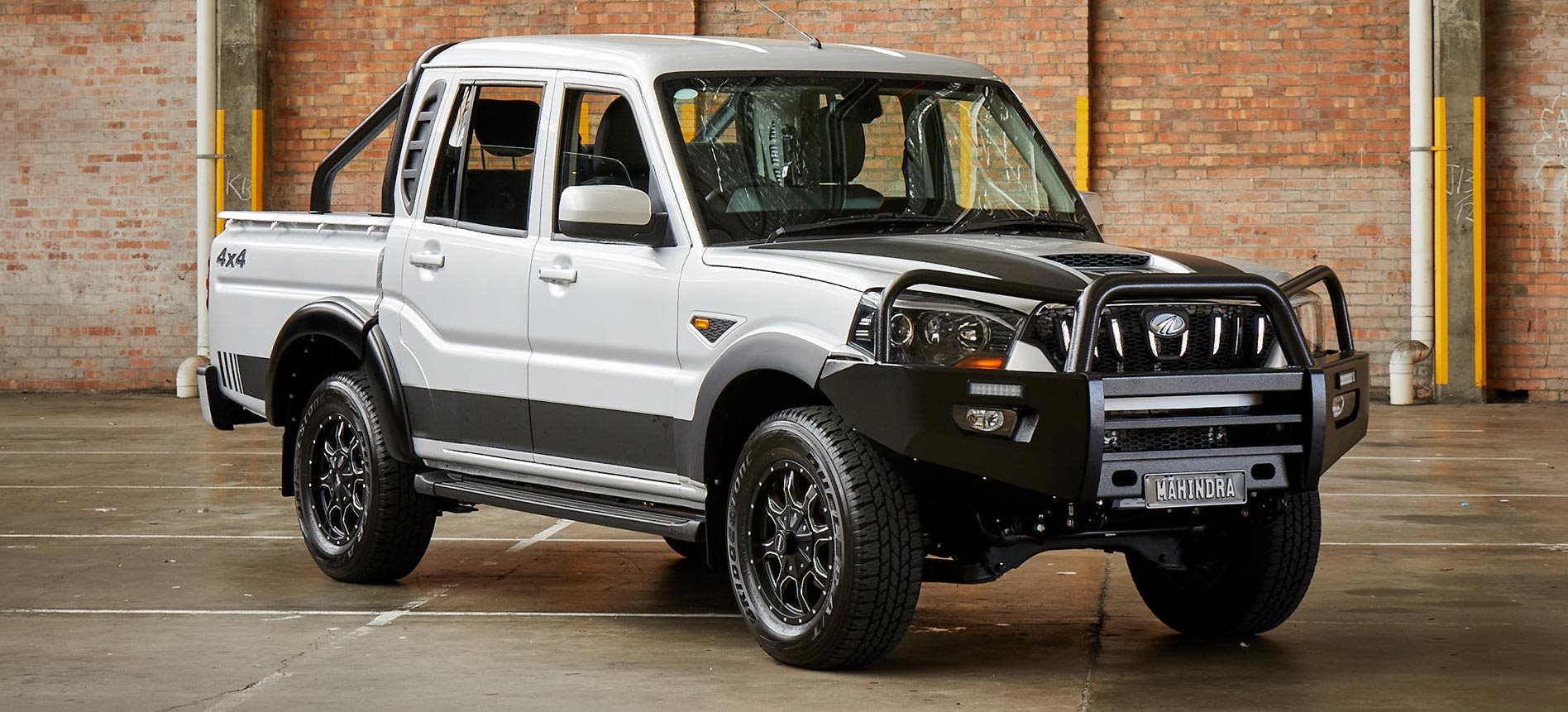
Great Wall Steed
Proof that cheap really can be cheerful. The Steed undercuts Hilux and Ranger by significant margins (we’re talking $13K and 17K respectively), yet boasts expensive goodies like on-demand four-wheel drive and rear disc brakes. Cabin is nice, too, and includes leather and heated front seats. You also get lots of equipment: cruise control, electric driver’s seat, tyre pressure monitoring, auto headlights/wipers and Bluetooth. Sat-nav is a $990 option. The downside is the Steed is based on old underpinnings and it feels a generation behind newer rivals, especially in the handling stakes. And while it will handle moderate off-road tracks, the Steed’s relatively low-slung body and average wheel articulation mean it isn’t as capable off-road as mainstream rivals.
Pick of the range: There’s only one 4×4 model to choose from, priced at $30,990.
Verdict: You get a lot for a little with the Steed, though it’s not as capable on- or off-road as newer rivals. We’d look elsewhere if price isn’t your only priority.
